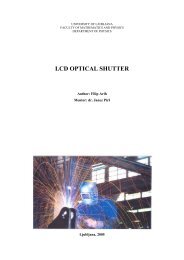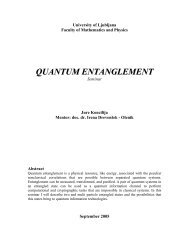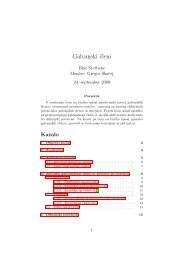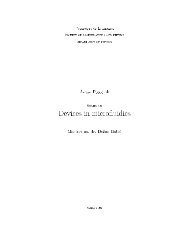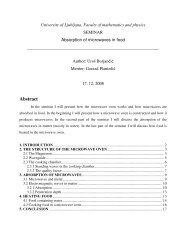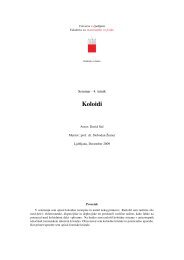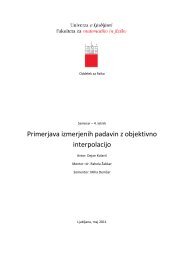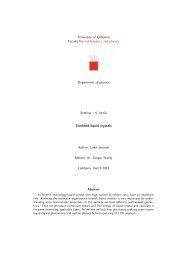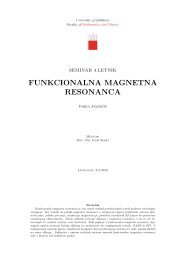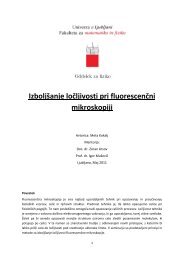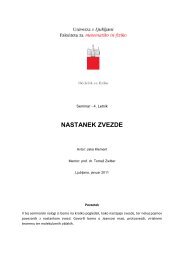You also want an ePaper? Increase the reach of your titles
YUMPU automatically turns print PDFs into web optimized ePapers that Google loves.
This break leads to a free radical defect, a so-called neutral soliton which is relatively stable<br />
(Figure 9). Addition of an acceptor removes an electron and creates a positive soliton (or a neutral one<br />
if the electron removed is not the free electron). The resulting carbocation is stabilised by having the<br />
charge spread over several monomer units and the charged solitons are responsible for making<br />
polyacetylene a conductor<br />
Figure 9: Charge defects in polyacetylene and oxidative doping.<br />
A further type of charge storage occurs when the generated charge and the radical are coupled to<br />
each other via local resonance of the charge and the radical. This type of charge transport is present in<br />
polymers like PPV. This combination of a charge site and a radical dependent of each other is called a<br />
polaron. A new localised electronic state is created in the band gap, with the lower energy states being<br />
occupied by a single unpaired electron. Unlike the soliton, the polaron cannot move without first<br />
overcoming an energy barrier so movement is by a hopping motion.<br />
FIGURE 10: Radical cation (”polaron”) formed by removal of one electron on the 5th carbon<br />
atom of a undecahexaene chain (a ―> b). The polaron migration shown in c ―> e.<br />
If a second electron is removed from an already oxidised section of the polymer, either a second<br />
independent polaron may be created or, if it is the unpaired electron of the first polaron that is<br />
removed, a bipolaron is formed (with lower energy than 2 polarons) (Figure 11). The two positive<br />
charges of the bipolaron are not independent, but move as a pair, like the Cooper pair in the theory of<br />
superconductivity. While a polaron, being a radical cation, has a spin of 1/2, the spins of the<br />
bipolarons sum to S = 0.<br />
8



